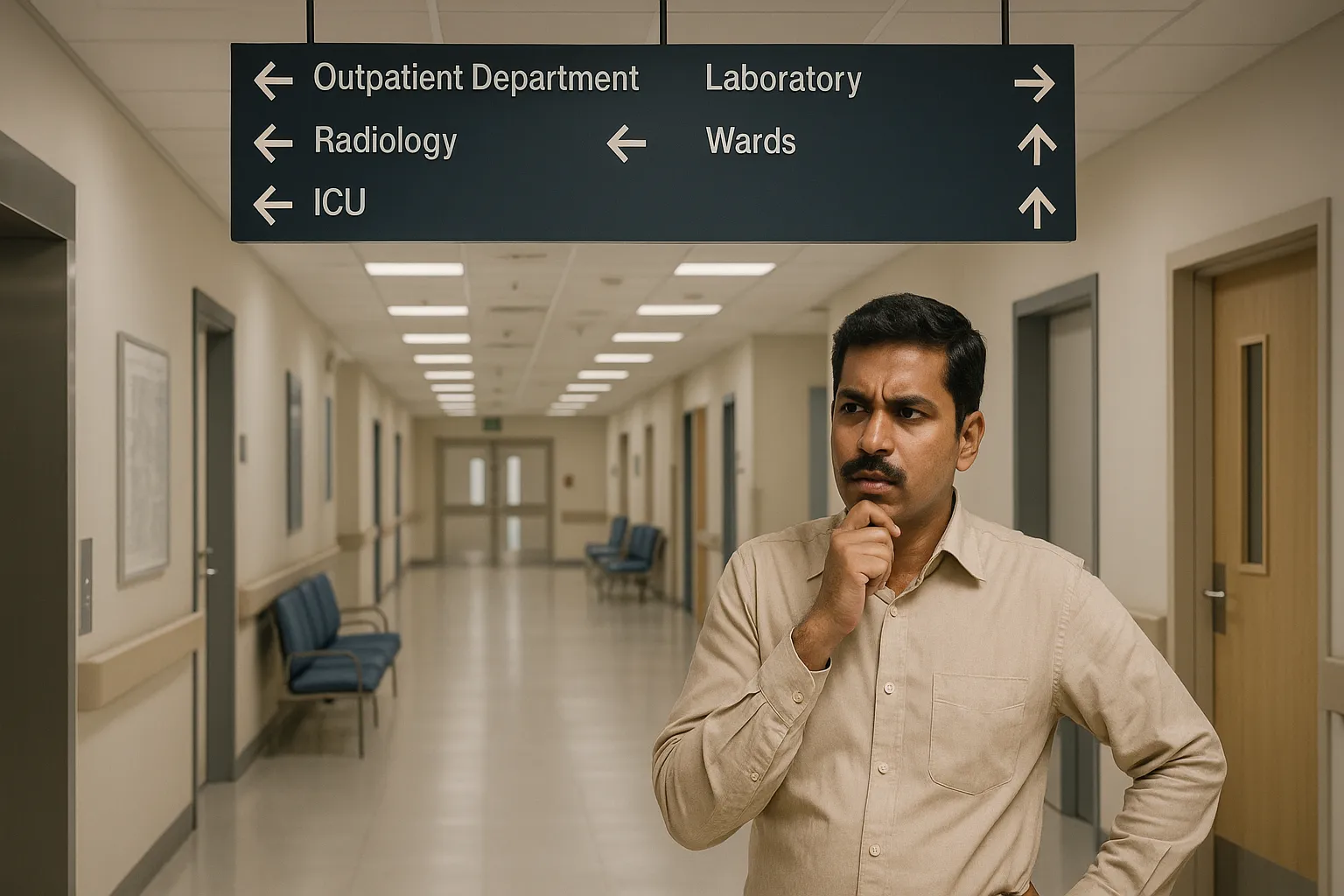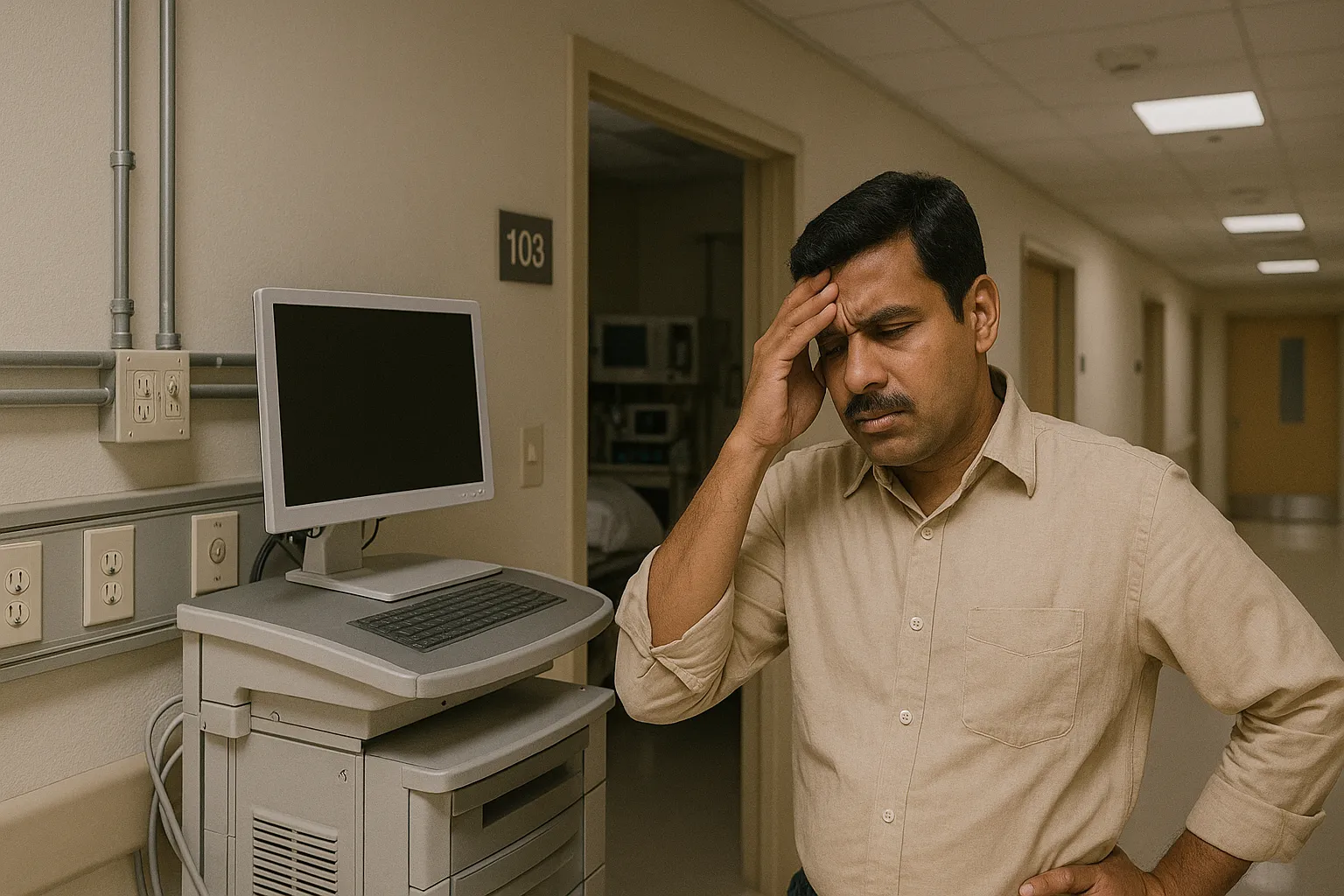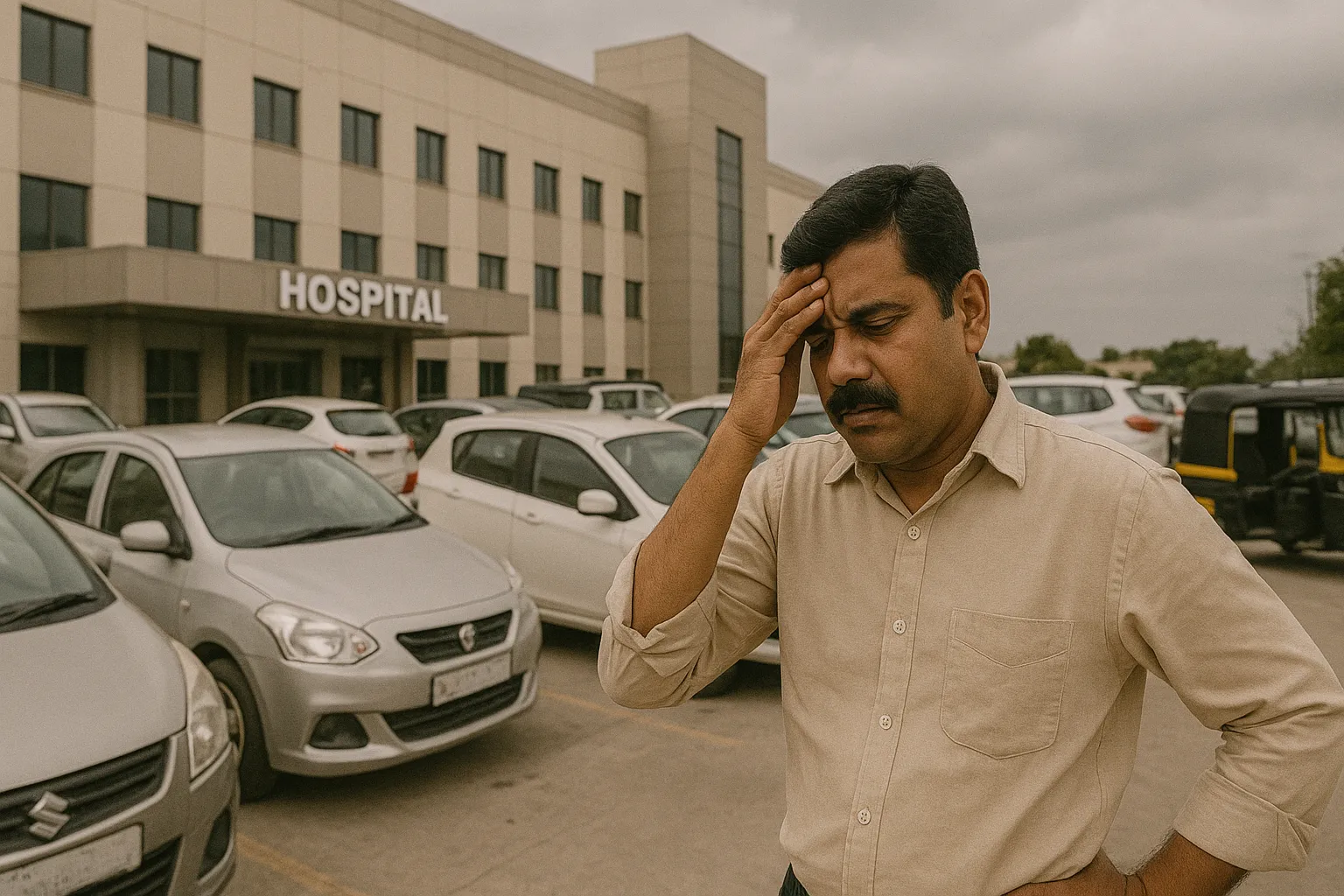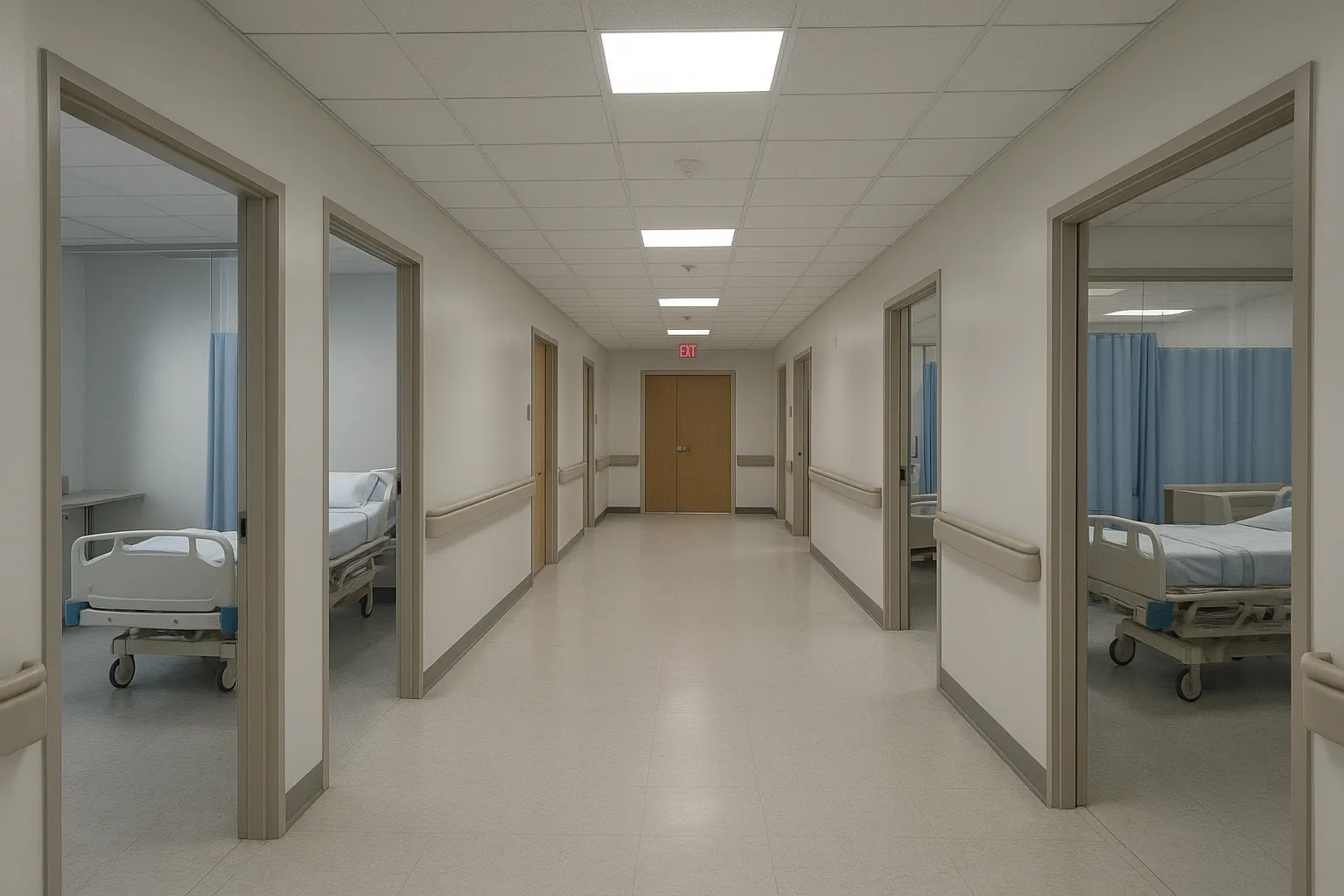13 Most Common Hospital Design Mistakes Doctors Regret
Hospital design can make or break the efficiency of medical operations. After spending years working in poorly planned facilities, healthcare professionals have identified critical flaws that continue to plague modern medical centers. These design oversights don't just create inconvenience – they directly impact patient care, staff productivity, and overall healthcare outcomes.
From cramped workspaces to confusing layouts that leave patients wandering in circles, these architectural blunders cost hospitals millions in lost efficiency and compromised care quality. Let's examine the most frustrating design failures that doctors encounter daily and explore how smarter planning could revolutionize healthcare delivery.
1. Inadequate Storage Space Throughout the Facility
One of the most persistent complaints from medical professionals revolves around insufficient storage capacity. Hospitals require vast amounts of supplies, equipment, and documentation storage, yet many facilities severely underestimate these needs during the planning phase.
Dr. Sarah Mitchell, an emergency medicine physician with 15 years of experience, explains: "You walk into supply closets that can barely fit two people, yet we need to store everything from wheelchairs to specialized monitoring equipment. Staff end up stacking supplies in hallways or converting patient areas into makeshift storage rooms."
The Real-World Impact
Insufficient storage creates cascading problems throughout the hospital. Nurses waste precious time searching for supplies across multiple locations. Critical equipment becomes difficult to locate during emergencies. Expensive medical devices get damaged when stored improperly in cramped spaces.
Better Storage Solutions
- Decentralized storage hubs on each floor
- Automated supply dispensing systems
- Vertical storage solutions that maximize floor space
- Mobile storage units that can be repositioned as needed
2. Poor Workflow Design Between Departments
Hospital departments don't operate in isolation, yet many facilities are designed as if they do. The result? Healthcare workers spend enormous amounts of time traveling between disconnected areas, reducing the time available for actual patient care.
Consider the typical patient admission process. A patient might start in the emergency department, move to radiology for imaging, then to the laboratory for blood work, and finally to an inpatient unit. If these departments are scattered across multiple floors or wings without logical connections, both patients and staff suffer.
Common Workflow Failures
| Department Pairing | Common Problem | Impact on Care |
|---|---|---|
| Emergency & Radiology | Located on different floors | Delayed diagnostic imaging |
| ICU & Operating Rooms | Separated by long corridors | Increased transport time for critical patients |
| Pharmacy & Patient Units | Central pharmacy too distant | Medication delivery delays |
| Lab & Emergency Department | No direct connection | Slower test result turnaround |
3. Confusing Wayfinding and Navigation Systems

Hospitals are complex buildings with multiple wings, floors, and departments. Yet many facilities treat wayfinding as an afterthought, resulting in a maze-like experience that frustrates patients, visitors, and even staff.
"I've worked in hospitals where I still get lost after three years," admits Dr. James Rodriguez, a cardiothoracic surgeon. "If medical professionals can't find their way around efficiently, imagine how overwhelming it must be for anxious patients and their families."
Signs of Poor Wayfinding
- Inconsistent signage styles and terminology
- Missing directional signs at critical decision points
- Overly complex numbering systems for rooms and departments
- Lack of visual landmarks or distinctive architectural features
- Poor lighting that makes signs difficult to read
Effective Navigation Solutions
Successful hospital navigation relies on intuitive design principles. Color-coded zones help people associate specific colors with different departments. Clear sight lines allow visitors to see their destination from key decision points. Digital displays can provide real-time directions and updates about department locations.
4. Insufficient Natural Light in Patient Areas
Natural light plays a crucial role in patient recovery and staff well-being, yet many hospitals are designed with limited windows or poorly positioned patient rooms that receive minimal daylight.
Research consistently shows that patients in rooms with natural light recover faster, require less pain medication, and report higher satisfaction scores. Staff members also experience less fatigue and burnout when working in naturally lit environments.
The Science Behind Light and Healing
Exposure to natural light helps regulate circadian rhythms, which are essential for proper sleep cycles and hormone production. Patients who maintain healthy sleep patterns during hospitalization experience faster healing, reduced infection rates, and shorter hospital stays.
For healthcare workers who often work long shifts, natural light exposure can help maintain alertness and reduce the risk of medical errors associated with fatigue.
5. Poorly Planned Nurse Stations and Workspaces
The nurse station serves as the command center for patient care on each hospital unit. When these spaces are poorly designed, the entire unit suffers from reduced efficiency and compromised patient monitoring capabilities.
Common Nurse Station Design Flaws
- Limited visibility to patient rooms
- Insufficient workspace for documentation and computer terminals
- Inadequate storage for frequently used supplies
- Poor acoustic design that allows private conversations to be overheard
- Cramped spaces that become bottlenecks during busy periods
Modern nurse stations should function as flexible workspaces that can accommodate multiple activities simultaneously. Nurses need areas for quiet documentation, collaborative planning sessions, family consultations, and medication preparation – often all at the same time.
6. Inadequate Isolation and Infection Control Features
The COVID-19 pandemic highlighted the critical importance of proper isolation capabilities in hospital design. Many facilities discovered they lacked adequate negative pressure rooms, proper ventilation systems, and appropriate spaces for isolating infectious patients.
Dr. Lisa Chen, an infectious disease specialist, notes: "We had to completely rethink our approach to patient isolation during the pandemic. Hospitals that were built without sufficient isolation rooms had to retrofit spaces quickly, often compromising other functions."
Essential Infection Control Design Elements
| Feature | Purpose | Common Oversight |
|---|---|---|
| Negative pressure rooms | Contain airborne pathogens | Insufficient quantity for demand |
| Anteroom spaces | Safe donning/doffing of protective equipment | Not included in original design |
| Separate ventilation systems | Prevent cross-contamination | Shared air handling units |
| Easy-to-clean surfaces | Reduce infection transmission | Materials that harbor bacteria |
7. Insufficient Power and Technology Infrastructure

Modern healthcare relies heavily on electronic systems, from patient monitoring equipment to electronic health records. Yet many hospitals struggle with inadequate electrical capacity and outdated technology infrastructure that can't support current medical equipment needs.
"Every piece of medical equipment today seems to require power and network connectivity," explains Dr. Robert Kim, a critical care physician. "But older hospitals often have limited electrical outlets and weak network coverage in patient rooms."
Technology Infrastructure Challenges
- Insufficient electrical outlets for modern medical equipment
- Weak Wi-Fi coverage in critical areas
- Outdated network cabling that can't support high-speed data transfer
- Lack of redundant power systems for critical equipment
- Poor integration between different technology systems
8. Noise Control Problems Throughout the Facility
Hospitals are notoriously noisy environments, with constant alarms, conversations, equipment sounds, and foot traffic. Poor acoustic design can interfere with patient rest, staff communication, and overall healing environments.
Excessive noise levels can actually slow patient recovery, increase the need for pain medications, and contribute to medical errors when staff members can't hear important communications clearly.
Sources of Hospital Noise
- Medical equipment alarms and monitors
- Conversations at nurse stations
- Wheeled equipment moving through corridors
- HVAC system operation
- Television and communication systems
Acoustic Design Solutions
Effective noise control requires a multi-layered approach. Sound-absorbing materials on walls and ceilings can reduce echo and ambient noise levels. Proper room layout can separate noisy activities from quiet patient areas. Modern building materials and construction techniques can provide better sound isolation between rooms.
9. Poor Emergency Response and Code Team Access
During medical emergencies, every second counts. Hospital design should facilitate rapid response team movement and provide clear access routes to all patient areas. Unfortunately, many facilities create barriers that slow emergency response times.
"I've responded to codes where we couldn't get our crash cart through doorways or had to navigate around multiple corners to reach the patient," recalls Dr. Amanda Foster, an emergency medicine physician. "These design flaws can literally mean the difference between life and death."
Emergency Access Design Failures
| Problem Area | Design Flaw | Response Impact |
|---|---|---|
| Doorways | Too narrow for emergency equipment | Delayed access to patients |
| Elevator systems | Insufficient capacity during emergencies | Code teams stuck waiting |
| Corridor design | Multiple turns and obstacles | Slowed equipment transport |
| Stairwell access | Limited emergency stairway options | Evacuation bottlenecks |
10. Inadequate Family and Visitor Spaces
Family involvement plays a crucial role in patient recovery, yet many hospitals fail to provide adequate spaces for family members to remain comfortable during extended stays. This oversight can actually hinder healing and increase patient anxiety.
Modern healthcare recognizes that family-centered care improves outcomes. When families can remain close to patients without disrupting medical activities, everyone benefits. Patients feel more supported, families stay better informed about care plans, and healthcare providers can more easily involve families in treatment decisions.
Common Family Space Shortcomings
- Uncomfortable seating for extended stays
- Insufficient space for multiple family members
- Lack of privacy for difficult conversations
- No areas for children to play safely
- Limited access to food and refreshments
- Inadequate overnight accommodations for family members
11. Inflexible Room Designs That Can't Adapt
Healthcare needs change rapidly, and hospital rooms should be designed to adapt to different types of care. Rigid room designs that can't be easily reconfigured limit a hospital's ability to respond to changing patient populations or new treatment approaches.
"During the pandemic, we desperately needed to convert regular patient rooms into negative pressure isolation rooms," explains Dr. Michael Torres, a pulmonologist. "But our fixed infrastructure made these conversions extremely difficult and expensive."
Benefits of Flexible Room Design
- Ability to change bed configurations based on patient needs
- Easy conversion between different levels of care
- Accommodation of new medical equipment as technology advances
- Efficient response to changing patient demographics
- Cost-effective adaptation to new care models
12. Poor Staff Break and Rest Areas
Healthcare workers often endure long, stressful shifts, yet many hospitals provide inadequate spaces for staff to rest and recharge. This oversight contributes to burnout, reduces job satisfaction, and can indirectly impact patient care quality.
Proper rest areas are essential for maintaining staff mental health and preventing fatigue-related errors. Healthcare workers need spaces where they can briefly disconnect from the intense hospital environment, eat meals without interruption, and socialize with colleagues.
Elements of Effective Staff Areas
| Space Type | Key Features | Benefits |
|---|---|---|
| Break rooms | Comfortable seating, natural light, kitchen facilities | Stress reduction, social interaction |
| Quiet rooms | Private space for reflection or napping | Mental health support, fatigue management |
| Outdoor spaces | Gardens, patios, fresh air access | Mood improvement, stress relief |
| Fitness areas | Exercise equipment, changing facilities | Physical wellness, stress management |
13. Insufficient Parking and Transportation Access

While often overlooked during the design process, inadequate parking and poor transportation access can create significant stress for patients and families during already difficult times. These issues can even delay medical care when patients struggle to reach appointments on time.
"I've had patients miss important follow-up appointments simply because they couldn't find parking or couldn't afford the parking fees," notes Dr. Patricia Williams, a family medicine physician. "Transportation barriers shouldn't prevent people from receiving necessary medical care."
Transportation and Access Considerations
- Sufficient parking capacity for peak demand periods
- Covered walkways from parking areas to entrances
- Clear signage directing visitors to appropriate parking areas
- Accessible parking spaces near main entrances
- Public transportation connections
- Drop-off areas for emergency and urgent care patients
How These Design Mistakes Impact Patient Outcomes
The cumulative effect of poor hospital design extends far beyond inconvenience. Research demonstrates clear connections between hospital design quality and patient outcomes, including infection rates, length of stay, medication errors, and overall patient satisfaction.
Measurable Impacts of Poor Design
- Increased healthcare-associated infection rates due to poor ventilation and workflow design
- Higher rates of medical errors when staff members are fatigued from inefficient workflows
- Longer hospital stays when patients can't rest properly in noisy, poorly lit environments
- Reduced patient satisfaction scores affecting hospital reputation and reimbursement
- Higher staff turnover rates due to poor working conditions
Learning from Design Failures: Modern Solutions
The good news is that many hospitals are learning from these common design mistakes and implementing better solutions. Modern hospital design increasingly focuses on evidence-based approaches that prioritize both patient outcomes and staff efficiency.
For healthcare professionals planning new facilities, conducting a thorough feasibility study for a new hospital can help identify potential design challenges early in the planning process. This proactive approach allows teams to address workflow issues, space requirements, and technology needs before construction begins.
Emerging Design Trends
Contemporary hospital projects emphasize flexibility, sustainability, and human-centered design principles. Modular construction techniques allow for easier future modifications. Advanced building systems provide better environmental controls. Technology integration is planned from the beginning rather than added as an afterthought.
Some hospitals are adopting "universal room" concepts where all patient rooms are designed to accommodate multiple levels of care. This approach reduces patient transfers, improves continuity of care, and provides operational flexibility. For those interested in comprehensive planning approaches, resources on designing hospitals for maximum efficiency can provide valuable insights into modern design methodologies.
The Role of Healthcare Professionals in Design Planning
One key factor in preventing these design mistakes is involving healthcare professionals throughout the planning process. Doctors, nurses, and other clinical staff bring practical insights about daily workflows, patient needs, and operational challenges that architects and planners might not anticipate.
"The best hospital designs come from true collaboration between architects and the people who will actually work in the building," explains Dr. Jennifer Clark, a hospitalist who has participated in several hospital design projects. "We need to move beyond beautiful renderings to focus on functional spaces that support excellent patient care."
For many healthcare professionals considering hospital development, understanding when to hire a hospital project consultant becomes crucial. Professional consultants can bridge the gap between medical expertise and architectural design, helping avoid many of these common pitfalls.
Effective Design Collaboration Methods
- Mock-up rooms where staff can test workflows before construction
- Regular input sessions throughout the design process
- Post-occupancy evaluations to identify ongoing issues
- Cross-functional design teams including clinical and operational staff
Financial Impact of Poor Hospital Design
Beyond the human costs, these design mistakes carry significant financial implications. Hospitals with poor design often struggle with higher operational costs, reduced efficiency, and lower patient satisfaction scores that can affect reimbursement rates.
Cost Implications of Design Flaws
| Design Problem | Financial Impact | Estimated Cost |
|---|---|---|
| Poor workflow design | Increased staff time per patient | $500,000-$2M annually |
| Inadequate storage | Lost supplies, inefficient inventory management | $200,000-$800,000 annually |
| Infection control failures | Healthcare-associated infections, regulatory penalties | $1M-$10M per incident |
| Poor wayfinding | Staff time helping lost visitors, missed appointments | $100,000-$500,000 annually |
Retrofitting Existing Facilities
Not every hospital has the luxury of building from scratch. Many facilities must work with existing structures that suffer from these design problems. While complete renovation isn't always possible, targeted improvements can address many of these issues.
Strategic retrofitting focuses on high-impact changes that provide the greatest return on investment. This might include reconfiguring nurse stations for better patient visibility, adding storage solutions in underutilized spaces, or improving wayfinding systems throughout the facility.
Prioritizing Retrofit Projects
- Safety-critical improvements (infection control, emergency access)
- High-impact workflow improvements
- Patient experience improvements
- Staff satisfaction and retention projects
- Technology infrastructure upgrades
Future Considerations in Hospital Design
As healthcare continues to evolve, hospital design must adapt to new treatment approaches, technological advances, and changing patient expectations. Future-focused design considers trends like telemedicine integration, robotic assistance, and personalized medicine.
Climate change considerations are also becoming increasingly important in hospital design. Facilities must be resilient to extreme weather events while minimizing their environmental impact through sustainable design practices.
Design Trends for the Next Decade
- Integration of artificial intelligence and automation systems
- Flexible spaces that can rapidly adapt to different functions
- Biophilic design elements that incorporate natural elements
- Advanced infection control and air filtration systems
- Sustainable and resilient building systems
Conclusion
The design mistakes outlined in this article represent costly oversights that continue to impact hospitals worldwide. From inadequate storage and poor workflow design to insufficient natural light and problematic wayfinding systems, these flaws create barriers to excellent patient care and contribute to healthcare worker burnout.
The path forward requires genuine collaboration between healthcare professionals and design teams, evidence-based design approaches, and a commitment to learning from past mistakes. By addressing these common design problems, hospitals can create environments that truly support both patient healing and staff well-being.
As the healthcare industry continues to evolve, the importance of thoughtful hospital design will only grow. Facilities that prioritize functional design, flexibility, and human-centered approaches will be better positioned to adapt to future challenges while providing exceptional patient care.
The investment in proper hospital design pays dividends in improved patient outcomes, staff satisfaction, and operational efficiency. While correcting these design mistakes requires significant resources, the long-term benefits to patient care and hospital operations make these improvements essential investments in the future of healthcare.
For healthcare professionals who recognize these design challenges in their current facilities or are planning new projects, professional guidance can make a significant difference. Comprehensive hospital planning and designing services can help avoid these costly mistakes while creating facilities that truly support excellent patient care and operational efficiency.
Frequently Asked Questions
What is the most expensive hospital design mistake to fix after construction?
Poor workflow design between departments is typically the most expensive to correct after construction. Reconfiguring entire departments or adding connections between floors can cost millions of dollars and often requires temporary facility closures or relocations during construction.
How much can poor hospital design impact patient recovery times?
Studies show that patients in well-designed hospitals with adequate natural light, proper noise control, and family-friendly spaces can experience 15-25% shorter recovery times compared to those in poorly designed facilities. This translates to significant cost savings and better patient outcomes.
Are there specific design standards that hospitals must follow?
Yes, hospitals must comply with various building codes and standards, including those from the International Building Code, Americans with Disabilities Act, and healthcare-specific guidelines from organizations like the Facility Guidelines Institute. However, these standards represent minimum requirements, and many common design problems occur even when facilities meet these basic standards.
How can existing hospitals improve their design without major renovation?
Many design problems can be addressed through strategic improvements like better signage systems, reorganizing storage areas, improving lighting in patient rooms, creating flexible workspaces, and upgrading technology infrastructure. These changes often provide significant improvements without requiring major construction.
Who should be involved in hospital design planning to avoid these mistakes?
Effective hospital design requires input from doctors, nurses, administrators, patients, families, maintenance staff, and security personnel in addition to architects and engineers. Each group brings unique perspectives about how the facility will actually be used, helping identify potential problems before construction begins.


